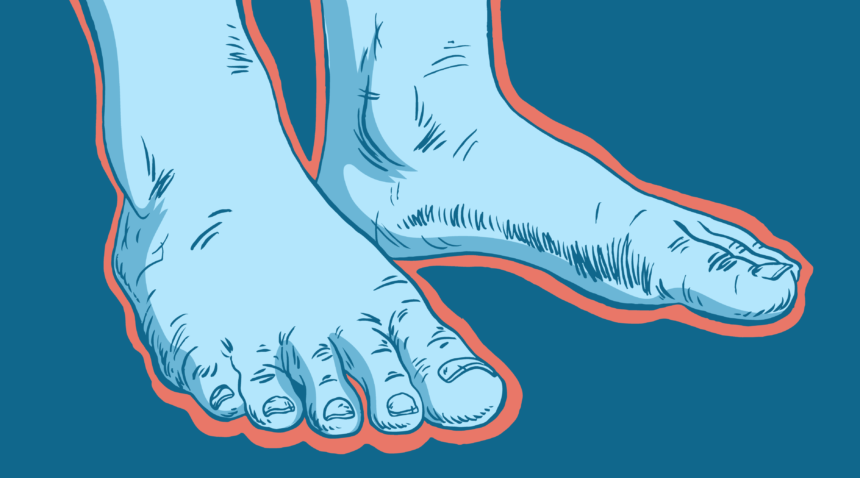It seems like every few weeks, we hear news about yet another possible symptom of coronavirus disease 2019 (COVID-19). One of the latest is so-called COVID toes, a red or pink rash that causes a burning, tender or itching sensation and often appears on people who otherwise show no signs of the virus.
The name “COVID toes” is a bit misleading, as this frostbite-like rash can also appear on the fingers and other parts of the body, says UNC Health dermatologist Puneet Singh Jolly, MD, PhD.
So how is this rash related to COVID-19, and what should you do if you think you have it?
A Rash on the Skin Can Indicate a Virus
It is not surprising that COVID-19 could cause skin problems, since many viruses can cause skin abnormalities, Dr. Jolly says.
“We believe these skin changes develop either from direct effects of the virus or by the virus overstimulating the immune system, which manifests as a rash or other skin abnormalities. These skin manifestations can occur before or after other typical viral symptoms,” Dr. Jolly says. “We still are not sure about the timeline of these manifestations as it relates to COVID-19 infection.”
The COVID Connection
Researchers in Spain studied this connection and found that patients with this type of rash typically either ended up with symptoms of COVID-19, had a confirmed case of COVID-19 after the rash appeared, or had no symptoms of the virus but had been in close contact with someone who had it, says UNC Health dermatologist Heather Holahan, MD.
About 20 percent of patients seemed to have some kind of skin manifestation of the disease, Dr. Jolly says. In addition, most of the patients with these skin problems were younger—between ages 20 and 40—and had a better prognosis.
The study from Spain demonstrated that for “younger patients, the skin abnormalities tended to occur later, toward the end of the illness, and were generally associated with a more benign disease course,” Dr. Holahan says. “In contrast, for older patients, rashes, in particular ulceration of the lower extremities (ankles), were associated with a more serious infection (10 percent mortality) including pneumonia and requiring inpatient admission and ICU care.”
However, this association was not uniform, and some older patients with these rashes did not require admission, Dr. Holahan says.
Both physicians say it is too early to know the exact connection and more research is needed to determine whether COVID-19 really causes this rash.
“We don’t know if it’s an immune response, if having the skin reaction means you’ll do well because the host (your body’s immune system) is responding well, or if it means you should go to the hospital,” Dr. Holahan says. “It’s just too early. It would be great if the skin reactions were more specific, but we’re not there yet.”
Dr. Jolly says that everything doctors know about COVID toes right now is based on anecdotes from communities with surges of COVID-19.
“That’s what it’s like when you are in the beginning phases of something,” Dr. Jolly says. “So what we think is a pattern now, people may look at later and say that there is no pattern.”
When to Call the Doctor
While the exact COVID-19 connection to rashes needs further study, if you experience any type of skin abnormalities such as red, painful or tender spots, bumps on your fingers or toes (“COVID toes”), or itchy rashlike hives on your body, call your primary care provider or dermatologist. Even if you don’t have COVID-19, it could be a sign of another illness.
On the other hand, “just because you have hives doesn’t mean that you have coronavirus,” Dr. Jolly says. “But if you have other symptoms we believe to be associated with COVID-19 such as a fever, sore throat or shortness of breath in addition to a rash, you should contact your primary care provider, who can determine if you need to be tested.”
For the latest information on COVID-19, visit the CDC website and the UNC Health COVID-19 Resources page, and follow UNC Health on Twitter, Facebook, Instagram and YouTube.

